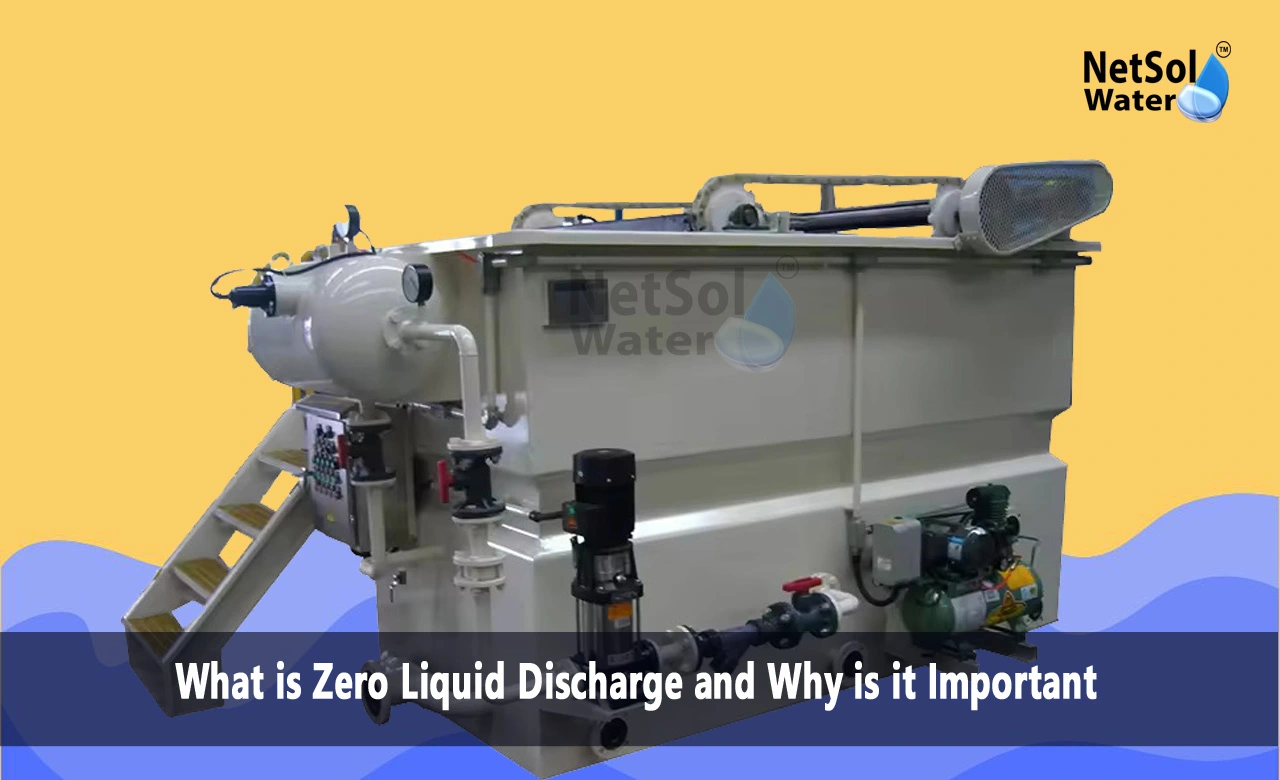What is Zero Liquid Discharge and Why is it Important?
As freshwater scarcity issues continue to grow worldwide, industrial users are under pressure to reduce wastewater discharge volumes significantly. This has led to a rising adoption of zero-liquid discharge systems. But what does ZLD treatment involve, and why has it become such a crucial environmental priority?
Let’s learn that here....
Understanding Zero Liquid Discharge
ZLD is an advanced wastewater treatment approach where virtually no water is released as liquid discharge at the end of the treatment cycle. Instead, the water cycle is closed-looped within the plant. In a ZLD system, the facility's wastewater stream goes through multiple stages of treatment and recycling. The purified water gets continually recycled back for operations, while the concentrated waste stream is either solidified or evaporated, minimising liquid discharge.
Zero Liquid Discharge plants use processes like:
· Ultrafiltration/reverse osmosis membrane separation
· Multi-effect evaporation and crystallisation
· Dewatering/solidification
· Thermal brine concentration
· Evaporation ponds
The goal is to eliminate any hazardous wastewater release by purifying the water for reuse and isolating all contaminants into solid residuals for disposal.
Why Zero Liquid Discharge System Adoption is Growing Rapidly?
Several key factors are driving more industrial facilities to implement true ZLD capabilities:
Water Scarcity - With freshwater constraints rising, recycling treated effluent has become crucial for conserving water supplies and maintaining operations.
Environmental Regulations - Increasingly stringent regulations restrict liquid effluent discharge volumes and contaminant levels to protect local water resources and habitats.
Public Perception - Companies face scrutiny over water stewardship and visible discharge plumes. ZLD helps project environmental responsibility.
Economic Incentives - Facilities can face heavy fines for excessive discharge along with higher freshwater intake costs. Recycling treated water provides cost savings.
ZLD systems avoid hazardous liquid discharge issues while enabling facilities to remain in production by recycling their industrial process and contaminated effluent streams. Reducing freshwater footprints provides both economic and environmental benefits.
What are the remarkable benefits of Zero Liquid Discharge?
While ZLD systems require significant capital investment, the long-term payoff versus conventional discharge often justifies the costs. Key factors to consider:
· Zero discharge fee payments and fines
· Lower freshwater supply intake costs
· Valuable solids recovery/byproducts
· Extending plant operations/lifetimes
· Sustainability/public image benefits
Return on investment depends on each facility's local conditions. High discharge fees, water scarcity, and stringent environmental regulations improve ZLD payback periods.
Conclusion:
As more companies focus on managing water responsibly and water scarcity becomes more widespread, industrial users will have increasing requirements to reduce the amount of their wastewater. While zero liquid discharge (ZLD) systems are complex solutions requiring skilful engineering design and operation, they represent a proven method for closing industrial water loops and alleviating strains on surface and groundwater supplies. With technology improvements enhancing efficiency and economics, along with growing regulatory pressures, ZLD treatment is composed to become standard practice for managing wastewater streams across water-intensive industries.
To explore customised commercial RO plants, Industrial RO plants, ETP or STP solutions for your needs in your areas and nearby regions, contact Netsol Water at:
Phone: +91-965-060-8473, Email: enquiry@netsolwater.com



